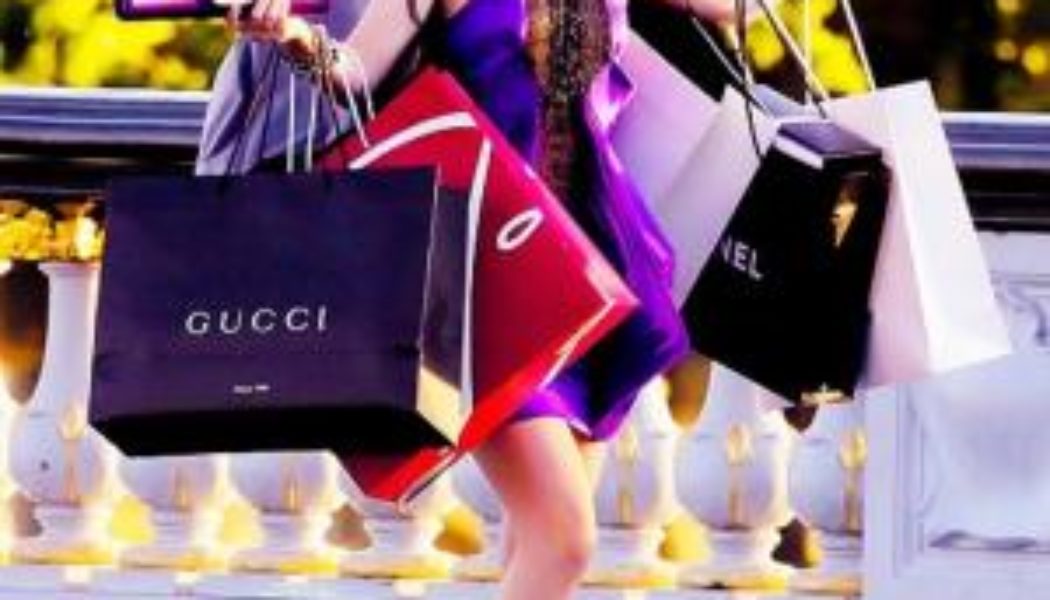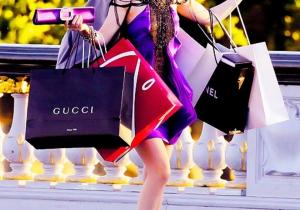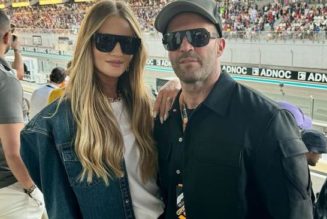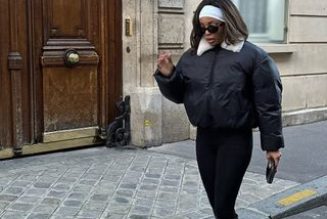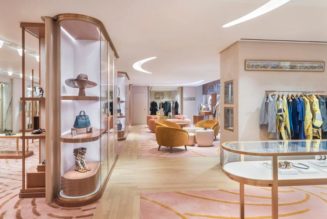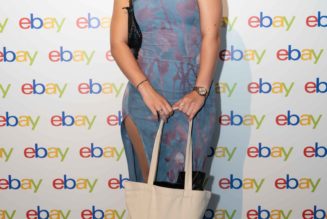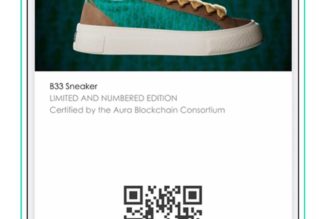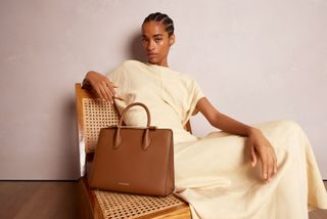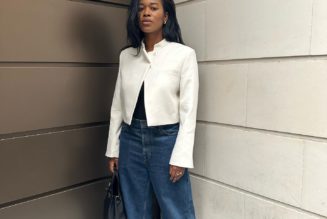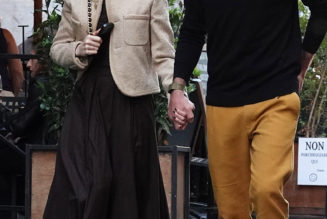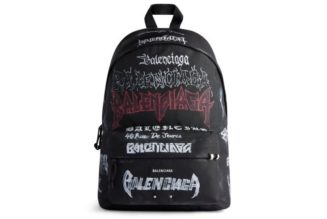Stay up to date with Luxury Fashion Market research offered by HTF MI. Check how key trends and emerging drivers are shaping this industry growth.
— Criag Francis
PUNE, MAHARASHTRA, INDIA, August 31, 2023/EINPresswire.com/ — The 2023E-2030 Global Luxury Fashion Market study with 132+ market data Tables, Pie charts & Figures is now released by HTF MI. The research assessment of the Market is designed to analyse futuristic trends, growth factors, industry opinions, and industry-validated market facts to forecast till 2029. The market Study is segmented by key a region that is accelerating the marketization. This section also provides the scope of different segments and applications that can potentially influence the market in the future. The detailed information is based on current trends and historic milestones. Some of the players studied are LVMH Moët Hennessy Louis Vuitton SE (France), Kering SA (France), Richemont SA (Switzerland), The Estée Lauder Companies Inc. (United States), Compagnie Financière Richemont SA (Switzerland), Hermes International S.A. (France), Burberry Group plc (United Kingdom), Prada S.p.A. (Italy), Chanel S.A. (France), Gucci (Italy), Versace (Italy), Ralph Lauren Corporation (United States), Tiffany & Co. (United States).
The Global Luxury Fashion Market was valued at USD 104.71 Billion in 2023 and is expected to reach USD 155.4 Billion by 2029, growing at a CAGR of 7.4% during 2023-2029.
Download Sample Report PDF of 2023E-2030 Global Luxury Fashion Market 👉 https://www.htfmarketintelligence.com/sample-report/global-luxury-fashion-market
Definition:
The luxury fashion market refers to a segment of the fashion industry that offers high-end, premium-quality clothing, accessories, footwear, and other luxury products that are known for their exceptional design, craftsmanship, exclusivity, and brand prestige. Luxury fashion brands focus on creating products that cater to a discerning clientele seeking unique and elevated fashion experiences. These brands often set trends, influence fashion aesthetics, and embody a lifestyle associated with luxury, elegance, and sophistication. Luxury fashion products are crafted with meticulous attention to detail, using the finest materials and skilled craftsmanship to ensure superior quality and durability. Luxury fashion brands are known for their innovative and iconic designs that stand out from mainstream fashion trends, setting new standards for creativity and style.
Market Trends:
• Luxury fashion brands are increasingly focusing on sustainability, using eco-friendly materials, ethical sourcing, and transparent production processes to align with environmentally conscious consumers.
• The integration of technology in luxury fashion, such as virtual fashion shows, augmented reality (AR) try-ons, and immersive online shopping experiences, is becoming more prominent.
• The fusion of luxury and streetwear styles is a growing trend, appealing to younger consumers and blurring the lines between high fashion and everyday wear.
Market Drivers:
• The desire for status, prestige, and unique experiences drives consumers to invest in luxury fashion items as symbols of social status.
• Strong brand equity and heritage influence purchasing decisions, with consumers often seeking luxury brands for their reputation and craftsmanship.
• Millennials and Gen Z are becoming significant consumers of luxury fashion, driving shifts in design aesthetics and brand communication strategies.
Market Challenges
• The luxury fashion market is competitive and saturated, making it challenging for brands to stand out and maintain their exclusivity.
• Counterfeit products undermine brand integrity and consumer trust, posing a challenge for luxury brands to protect their intellectual property.
• Rapid changes in consumer preferences and trends require luxury brands to remain agile and responsive to evolving tastes.
Market Restraint
• Economic downturns can impact luxury spending, as consumers might prioritize essentials over discretionary luxury purchases.
• While there’s a growing demand for sustainable practices, the integration of such practices can pose challenges due to supply chain complexities and higher costs.
• Luxury brands must adhere to various regulations, including intellectual property laws, advertising standards, and ethical practices, which can restrict certain activities.
Avail Limited Period Offer /Discount on Immediate purchase @ https://www.htfmarketintelligence.com/request-discount/global-luxury-fashion-market
2023E-2030 Global Luxury Fashion Market Competitive Analysis
Know your current market situation! Not just new products but ongoing products are also essential to analyse due to ever-changing market dynamics. The study allows marketers to understand consumer trends and segment analysis where they can face a rapid market share drop. Figure out who really the competition is in the marketplace, get to know market share analysis, market position, % Market Share, and segmented revenue.
Players Included in Research Coverage: LVMH Moët Hennessy Louis Vuitton SE (France), Kering SA (France), Richemont SA (Switzerland), The Estée Lauder Companies Inc. (United States), Compagnie Financière Richemont SA (Switzerland), Hermes International S.A. (France), Burberry Group plc (United Kingdom), Prada S.p.A. (Italy), Chanel S.A. (France), Gucci (Italy), Versace (Italy), Ralph Lauren Corporation (United States), Tiffany & Co. (United States)
Additionally, Past 2023E-2030 Global Luxury Fashion Market data breakdown, Market Entropy to understand development activity and Patent Analysis*, Competitors Swot Analysis, Product Specifications, and Peer Group Analysis including financial metrics are covered.
Segmentation and Targeting
Essential demographic, geographic, psychographic, and behavioural information about business segments in the 2023E-2030 Luxury Fashion market is targeted to aid in determining the features the company should encompass in order to fit into the business’s requirements. For the Consumer-based market – the study is also classified with Market Maker information in order to understand better who the clients are, their buying behaviour, and patterns.
2023E-2030 Luxury Fashion Product Types In-Depth: Clothing & Apparel, Footwear, Accessories, Others
2023E-2030 Luxury Fashion Major Applications/End users: Store-Based, Non-Store Based
2023E-2030 Luxury Fashion Major Geographical First Level Segmentation:
• APAC (Japan, China, South Korea, Australia, India, and the Rest of APAC; the Rest of APAC is further segmented into Malaysia, Singapore, Indonesia, Thailand, New Zealand, Vietnam, and Sri Lanka)
• Europe (Germany, UK, France, Spain, Italy, Russia, Rest of Europe; Rest of Europe is further segmented into Belgium, Denmark, Austria, Norway, Sweden, The Netherlands, Poland, Czech Republic, Slovakia, Hungary, and Romania)
• North America (U.S., Canada, and Mexico)
• South America (Brazil, Chile, Argentina, Rest of South America)
• MEA (Saudi Arabia, UAE, South Africa)
Buy Now Latest Edition of 2023E-2030 Global Luxury Fashion Market Report @ https://www.htfmarketintelligence.com/buy-now?format=1&report=5352
Research Objectives:
– Focuses on the key manufacturers, to define, pronounce and examine the value, sales volume, market share, market competition landscape, SWOT analysis, and development plans in the next few years.
– To share comprehensive information about the key factors influencing the growth of the market (opportunities, drivers, growth potential, industry-specific challenges and risks).
– To analyse the with respect to individual future prospects, growth trends and their involvement to the total market.
– To analyse reasonable developments such as agreements, expansions new product launches, and acquisitions in the market.
– To deliberately profile the key players and systematically examine their growth strategies.
FIVE FORCES & PESTLE ANALYSIS:
In order to better understand market conditions five forces analysis is conducted that includes the Bargaining power of buyers, Bargaining power of suppliers, Threat of new entrants, Threat of substitutes, and Threat of rivalry.
• Political (Political policy and stability as well as trade, fiscal, and taxation policies)
• Economical (Interest rates, employment or unemployment rates, raw material costs, and foreign exchange rates)
• Social (Changing family demographics, education levels, cultural trends, attitude changes, and changes in lifestyles)
• Technological (Changes in digital or mobile technology, automation, research, and development)
• Legal (Employment legislation, consumer law, health, and safety, international as well as trade regulation and restrictions)
• Environmental (Climate, recycling procedures, carbon footprint, waste disposal, and sustainability)
Get Detailed TOC and Overview of Report @ https://www.htfmarketintelligence.com/report/global-luxury-fashion-market
Thanks for reading this article, you can also make sectional purchase or opt-in for regional report by limiting the scope to only North America, ANZ, Europe or MENA Countries, Eastern Europe or European Union.
About Us:
HTF Market Intelligence is a leading market research company providing end-to-end syndicated and custom market reports, consulting services, and insightful information across the globe. HTF MI integrates History, Trends, and Forecasts to identify the highest value opportunities, cope with the most critical business challenges and transform the businesses. Analysts at HTF MI focuses on comprehending the unique needs of each client to deliver insights that are most suited to his particular requirements.
Criag Francis
HTF Market Intelligence Consulting Pvt Ltd
+ +1 434-322-0091
sales@htfmarketintelligence.com
Visit us on social media:
Facebook
Twitter
LinkedIn
![]()
